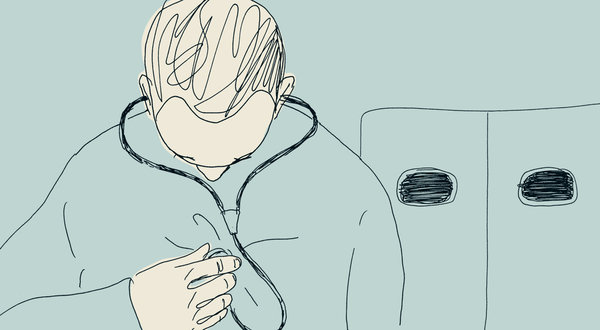6 steps on the path for doctors to know
By Timothy M. Smith
Most Americans die in hospitals, but acute care settings are by default focused on saving lives and therefore struggle to deal with death as something other than the unfortunate outcome of having no interventions left to try. An expert in end-of-life care notes that death is an essential part of life for patients and their families and suggests several steps physicians can take to make death a “healthy” experience.
For starters, Chapple said, one should acknowledge that the aim of acute care settings is to rescue patients, to avoid death at all costs.
“If there is an intervention to try, that’s what we’re going to do,” Chapple said, noting that this urge is reinforced by health care payment mechanisms, as well as by family members’ anguish. “So, it’s very difficult to move in a different direction. It’s like a train that you can’t jump off of.”
Trying everything, however, can undermine our cultural and clinical capacity to acknowledge the importance of dying, Chapple said. She suggested taking the following steps to reinforce the concept of dying in a healthy way.
Focus on patient safety and autonomy. “I worry that patients are overmedicated or undermedicated, that we’re not reacting to what’s really happening to the patient,” Chapple said. “Healthy dying is when patients themselves get to choose the agenda and get to take their own time—as long as they’re not suffering at all, or they appear not to be suffering—and we all just take their timetable and let it happen.”
Acknowledge death as a part of life. This begins with making the most of what Chapple called the “critical present” by suggesting that family members take time to reflect on the patient’s life. “It’s sort of antithetical to the way acute care is set up, which is doing all the time, rather than being, rather than existing and noticing the existential significance of where we are right at this moment,” she said.
Reset loved ones’ expectations. In critical care, Chapple often tells families, “This person has never died before, and this is our chance to make it the best dying they can possibly have.” She suggested preparing family members for what might happen logistically, such as transferring the patient to a step-down unit, and noting that the active dying phase can last several days.
Encourage family members to talk to patients. Hearing is thought to be one of the last senses to go in dying patients, so it may help to share memories. “Families may not talk to each other because they think the family knows all the stories,” she said, so members of the care team can help initiate this by asking about significant events in the patient’s life.
Note the importance of religious rituals. Ceremonies, prayers and songs can help make this time meaningful too.
Suggest loved ones say goodbye in their own ways. Let family members know the following, Chapple suggested: “If you want to … say to the person something that you’ve always wanted to say and never had the opportunity or you certainly want them to know before they die, this is the time to do that.”
Complete Article ↪HERE↩!

